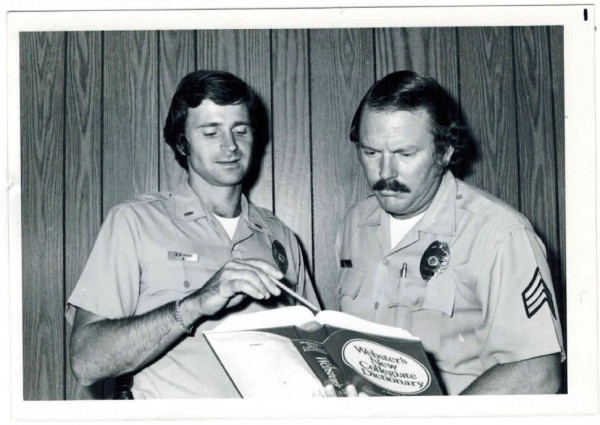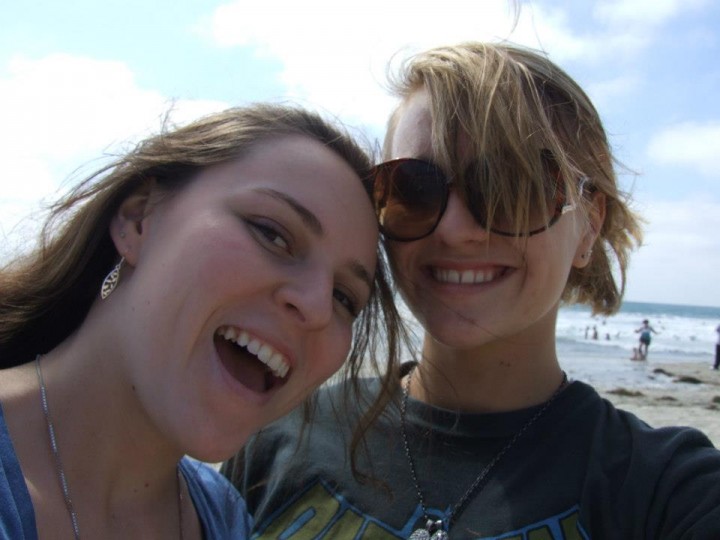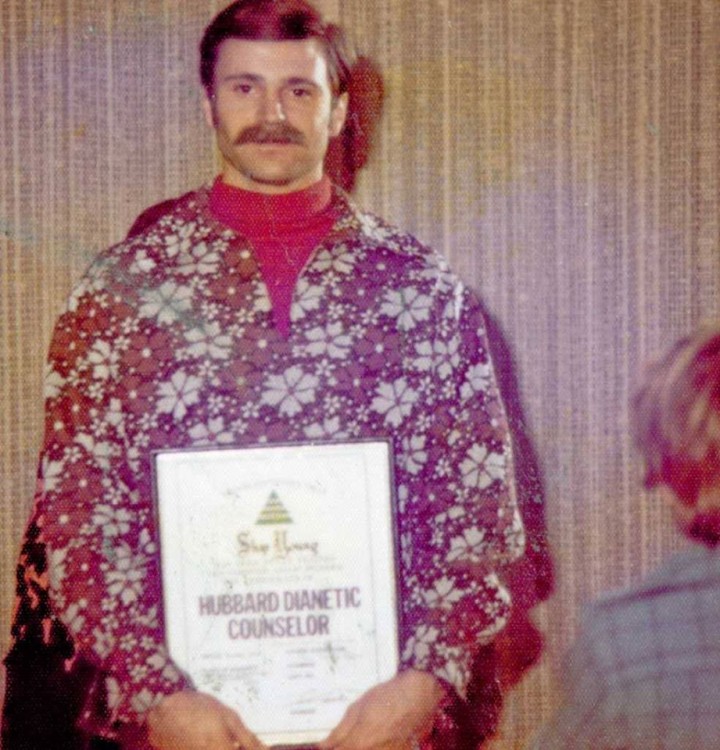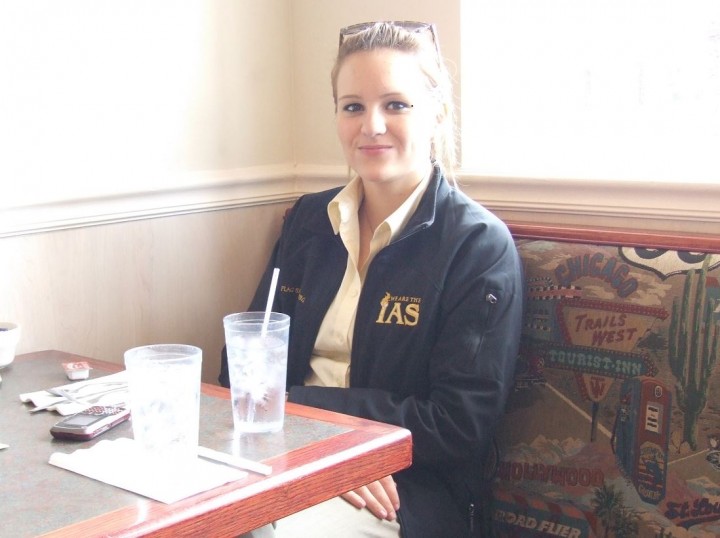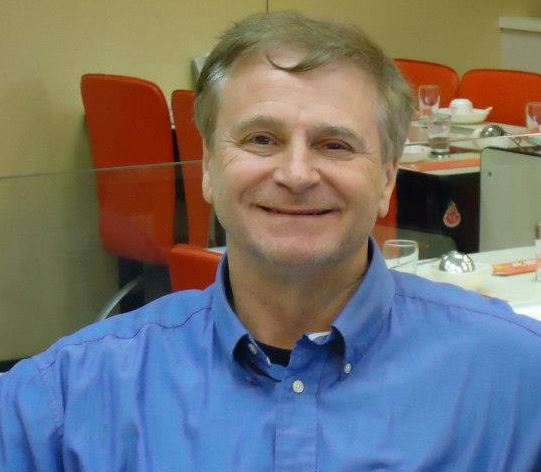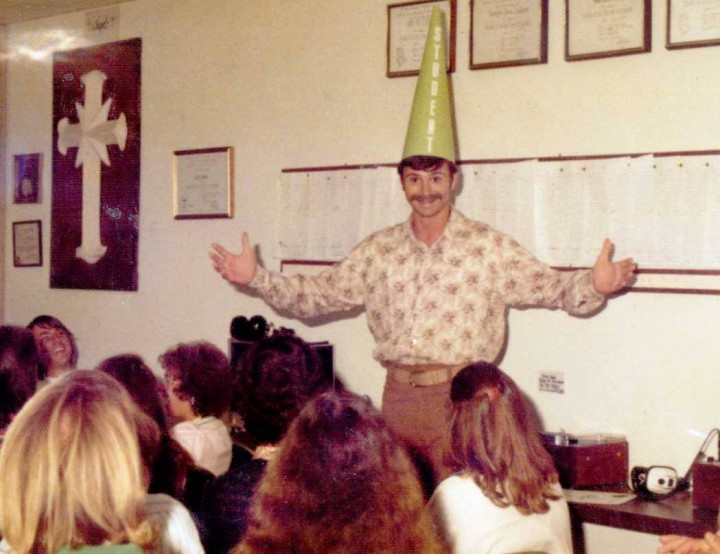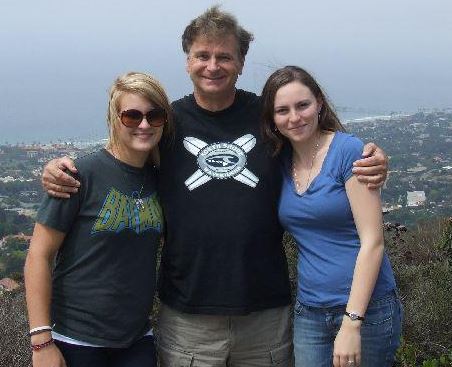Skip Young’s involvement in the Church of Scientology’s notorious “Snow White Program” was only a footnote, but it was a memorable one. It was the summer of 1976, and Scientology’s chief Washington DC spy, Michael Meisner, was in hiding after he’d been discovered that June using a fake IRS badge to gain access to a US Attorney’s office while on a mission to pilfer government documents about Scientology and its founder, L. Ron Hubbard.
Hubbard’s wife, Mary Sue, who was actively running the operation, hoped that the FBI wouldn’t discover the connection between Meisner and Scientology while she kept him out of sight in Los Angeles. In the meantime, she wanted to know what charges he might be facing. So she turned to Skip Young.
Young was a Scientologist, but he also happened to be a San Diego police lieutenant who had been covertly running operations for the church in his free time. And he didn’t hesitate to carry out his latest mission: He checked on Meisner’s charges through a request with the National Crime Information Center in Washington. But Young had made a huge mistake. The FBI was actively looking for Meisner, and Young’s request at the NCIC was flagged by the agency. FBI agents showed up the next day, expecting that Young had checked the NCIC database because he actually had Meisner in custody. Young lied, making up a story that the day before he’d stopped Meisner for jaywalking, but then had let him go.
The truth was soon found out, Young admitted to working secretly for Scientology, and he paid for it by losing his job. Meisner, meanwhile, escaped from his Scientology handlers, turned himself over to the FBI, and on July 8, 1977 the FBI raided the Church of Scientology in Washington and Los Angeles. Eventually, 11 top Scientologists, including Mary Sue Hubbard, went to prison for the Snow White Program’s years of infiltration and burglarizing of federal offices.
Young’s involvement in Snow White was soon forgotten, but he went on to continue spying for Scientology for many years. He stalked some familiar names, including Jolly West, Steve Hassan, and Hana and Jerry Whitfield.
But that’s not why he’s decided to come forward and speak publicly for the first time, more than 40 years after he first began his involvement in Scientology. Skip Young has learned that even someone who worked for decades as a Scientology spy could find his family ripped apart by the church’s toxic policy of “disconnection.”
Scientology is actively keeping Young, 69, from his daughters Megan and Alexis, who are 24 and 21, and who both work for Scientology in Florida.
“A state of war exists now between me and the church,” Young says, and he asked us if we know of any good attorneys in Los Angeles who might want to talk to him. We told him we’d ask around.
Warren M. “Skip” Young first ran into Scientology when he was just 16 and dating a girl in high school whose mother loved to talk about L. Ron Hubbard’s book, Dianetics. He later married his girlfriend, in 1968, and by 1973, he’d heard enough about Dianetics that he decided to read it for himself and then began taking courses in Scientology at a local mission.
The Mission of Adams Avenue was thriving, as was Scientology itself. Photos of the time show the mission in San Diego filled with young people on their trip through L. Ron Hubbard’s “technology” of the mind. By then, Young was also well down the road on his other path, as a patrolman for the San Diego Police Department. He had graduated from the police academy in 1968 and had then worked the drunk driver squad, arresting two drunks a night, five nights a week. He then moved into traffic and then patrol divisions before he made sergeant in 1974. Two years later, in 1976, he became the second youngest lieutenant in the police department’s history.
And by then, he was running operations for the Church of Scientology.
“I’d get a call maybe twice a week,” he told us during a series of interviews we conducted with him by telephone. “They’d tell me, ‘Hey, check out this license plate,’ or ‘Check out this name. Go to this address and write down all the license plates that you see there and run them.’ That’s essentially what I was doing for them.”
The purpose, he was told, was to keep “criminals” from getting involved in Scientology. His handlers said that the FBI had a secret plan to send undesirables into Scientology in order to discredit it, and they needed to run police checks on suspicious people who might be hanging around. But he also realized that they were worried about government agents trying to infiltrate the local “org.” This wasn’t an unreasonable fear. Scientology’s Washington DC org was infiltrated by the FDA in 1958 during its yearslong investigation of L. Ron Hubbard’s health claims, eventually resulting in a 1963 raid and an eight-year court fight. Government investigations of Scientology had also taken place in England and in Australia in the late 1960s. Scientology was vulnerable to government action, and Hubbard’s personal paranoia was shot through the organization.
Young was sympathetic to the cause. By 1976, he’d gone “Clear,” a milestone for Scientologists on their way up the “Bridge to Total Freedom.” And after going Clear, Young pushed on to the “OT” levels. And it was around this time, he says, that he was offered an assignment he had to turn down.
“I have a caper I want to talk to you about,” Young says he was told by one of his handlers, a member of Scientology’s notorious spy corps, the Guardian’s Office. “There’s this guy, Ted Patrick, a deprogrammer,” the GO operative said.
Skip knew the name. In 1972, when he was still an undergraduate studying public administration at San Diego State, he’d done a paper on the status of minorities and their earning power. His professor recommended that he interview a local African-American community organizer, Ted Patrick, to bolster the paper. “I interviewed him for a couple of hours,” Young says.
Patrick, the subject of a recent documentary, was a self-taught cult deprogrammer who sometimes handled cases involving Scientologists, but Young wasn’t aware of that. All he knew was that his handler wanted Patrick targeted.
“He asked me, ‘Would it be possible for you to plant some evidence and get him arrested and sent to prison?’ I said, No, fuck you. That’s a felony. It’s way too risky,” he says today.
“But that’s the mindset they had at the time,” he says, describing an era when Scientology felt under attack and was willing to go to extreme measures to fight back. “That’s what we were dealing with. That was the level of rancor they had for some of these other organizations.”
It wasn’t long after that, he says, when he got a call from his handler at the local San Diego org, who asked him about a man named Michael Meisner.
When the three of them got together, Skip knew he’d have to sit in the back seat of his rental car and let his daughters take control. The only time Alexis Young got to drive was when her father came to visit, and she always insisted on doing the driving. So Skip sat in the back and relaxed as his daughters chose which way to go.
Alexis didn’t get to drive otherwise because there was simply no time for it. She’s a Sea Org worker, and has been since she was 16 years old. She works at Scientology’s “spiritual mecca” in Clearwater, Florida known as the Flag Land Base. Her older sister, Megan McKinley, is on staff at Scientology’s Tampa org and is not a Sea Org worker. Both of them, however, are deeply devoted to Scientology, which they grew up in.
In other ways, they’re complete opposites, Skip says. Megan is the buttoned-down one, ordered and neat. Alexis, the younger one, was a disorganized flower child. They went to Scientology schools, but Skip says he didn’t expect to see his daughters leaving home so young or working for the church.
He thinks that happened as a result of the divorce that split up his relationship with the girls’ mother.
“We were losing our house and we had to move out. There was a real feeling of loss and failure,” he says. In October 2007, Skip and his wife moved into separate condos but in the same complex. They celebrated holidays together, but any chance of reconciling evaporated. They were divorced in 2008. Alexis later signed the Sea Org’s billion-year contract and began its grueling schedule of work at pennies an hour. She was 16.
“My feeling at the time was that the Sea Org saw that my family was disintegrating, so they moved in and snatched Alexis away,” Skip says. “I was feeling very bad about the whole thing.”
He moved back to San Diego in March 2009. Then, after stretches in Glendale and San Bernardino, he moved back to San Diego again in 2013. During those four years, he says, he continued to see Megan and Alexis twice a year in Florida.
“It was a wonderful, silly relationship between the three of us,” he says.
His ex-wife, meanwhile, got remarried to a man who was an OT 8, the highest level a Scientologist can currently achieve. (Skip had stalled in his Scientology courses in 2006 or 2007, only reaching as high as OT 5.)
“She left me for a guy with a bigger certificate,” he says with a laugh. (We left voice mail messages with Young’s ex-wife, Teresa, as well as one with his daughter Megan. Alexis, as a Sea Org worker, has no personal phone. We also sent a detailed email to Scientology spokeswoman Karin Pouw with a request for comment. We’ve received no replies.)
About a week before Skip made his October 2013 trip to Florida to see his daughters, he received a call from Alexis, who asked him, while he was there, to “route in.” She wanted him to talk to a Scientology official about where he was on the Bridge, and to get an estimate on how much it would cost to get to the next level.
“I took it as a push they were on to get more people in. I figured she was given a target to hit. I didn’t think it was unusual,” Skip says, and he agreed to meet with a counselor during his visit.
After a day letting his daughters drive him around town in his rental car, he sat down with the Director of Processing at Flag, who began questioning him while he was holding the sensors to an E-meter.
“She asked me how were things. And she asked, ‘Is there anything we should know?'” Scientologists are trained to believe that the E-meter can read minds, and that it’s useless to try to hold back secrets while you’re being questioned with the use of one. So Skip owned up.
“I just want you to know that I got this email from Debbie Cook,” he told her.
The previous year, on January 1, 2012, Debbie Cook, who had run the Flag Land Base as its captain for 17 years, sent out a message that quickly became notorious. In it, she listed what she believed were deficiencies in the leadership of David Miscavige, who ran Scientology. And she cited original quotations from L. Ron Hubbard to make her point. It was a devastating takedown of Miscavige (to Scientologists, at least; to outsiders it can seem incomprehensible). Skip admitted that he’d not only read Debbie’s email, but it had led him to look at websites which contained negative information about Scientology. He had also read books by several recent defectors from the organization, including Marty Rathbun, Jefferson Hawkins, and Amy Scobee.
“She got this really sick look on her face and wrote everything up. The next thing I know I was routed to Ethics,” he says, referring to Scientology’s enforcement corps. “The next day, I was threatened with a comm ev.”
A “committee of evidence” or “comm ev” is something like a court martial in the naval-obsessed world of Scientology. Skip was shocked, and he protested. A comm ev wasn’t called for in his case, he argued. The ethics officer he had been referred to, Master at Arms Slavka Bottomley, worked out a program for him to avoid a comm ev, which involved Skip spending time reading through a list of Hubbard policies as a sort of amends project for daring to look at negative info about Scientology, which is known as “entheta.”
“I got a little way through it, but then I had to fly home. I worked it out with Slavka: I would agree to finish the program at AOLA [the Advanced Org Los Angeles], and I would clear off my computer, and finish the program. And they wouldn’t comm ev me,” he says.
About two weeks after he arrived in San Diego, he went to AOLA. “It took five weeks to study the policies and complete the program. The policies were all written up in the 1960s and of course said nothing about the Internet. None of them prohibited reading information online,” he says.
Skip had done what he’d been asked to do, and he figured it had blown over. But then, on Friday, December 13, he got a call from AOLA’s Master at Arms, a woman named Theresa.
“She said, ‘We decided to call a comm ev on you.'”
“I have a name for you to check out. Can you check the NCIC?”
“Yes, I can.”
“Is it risky?”
“Depends. What have you got?”
That’s how Skip Young remembers the conversation in the summer of 1976 when he heard the name Michael Meisner for the first time. He wasn’t told that Meisner was at the center of a yearslong operation in Washington that had Scientology operatives infiltrating and burglarizing federal offices of the IRS and Justice Department and many others, taking out stolen documents by the yard. L. Ron Hubbard had designed the operation in a 1973 document and named it the Snow White Program. It had agents looking for documents in government offices around the world, but it was in Washington where the most intense activity was going on.
One day in June 1976, Meisner and another Scientology spy who had gotten a job at the IRS, Gerald Wolfe, were stopped as they attempted to get into a set of US Attorney’s offices through the library of the DC Bar, which was housed in a courthouse. Two FBI agents were called, who asked for their IDs, which turned out to be fakes. Later, one of the FBI agents ran into Wolfe at the IRS building and arrested him. But by then, Meisner had been whisked to Los Angeles and was in hiding. Now, several weeks later, Mary Sue Hubbard wanted to know what kind of charges Meisner might be facing and how much prison time he might get. That information would be in the NCIC database.
“I worked nights, and I was out in my patrol car. I radioed in to the dispatch area that I wanted an NCIC check. ‘Meisner, Michael’ I said, and I gave a date of birth,” Young says. “They typed the information into their computer system, which was linked to Washington. And then we waited. It took over 20 minutes to get the information back. In those days, everything was on paper, so even though you reached them by computer, on the other end they had to go pull the paper copies of the case record.”
Young was told that Meisner faced a charge of forgery of a government ID, which carried a five-year potential prison sentence. He relayed that information to his Scientology handler.
Meanwhile, on the other end, when the FBI realized that someone had made an NCIC check on Meisner, alarms went off. Young explains that an NCIC check implied that a fugitive had been caught by some local police agency, and they had checked on his name to see if he was wanted elsewhere.
The next day, the San Diego FBI field office sent two agents to meet with Young at about 10 in the morning. “Your person is wanted in DC. Do you still have him?” they asked.
“No, I let him go,” Young lied. They asked him for details about the arrest.
“I said I stopped this guy for jaywalking and he had no ID, so I got a weird feeling and ran his name on the NCIC. They showed me a picture of him. ‘Is this the guy?’ Like an idiot, I said yes. Looking back, I should have said he looked a little different. They then left, and I didn’t hear anything from them for many months.”
While Gerald Wolfe faced prosecution in DC, Meisner remained in hiding in Los Angeles and was getting increasingly impatient. Mary Sue Hubbard and her Guardian’s Office were taking a long time to work out a cover story for Meisner to use when the time came for him to turn himself in. But Meisner didn’t like that plan, and eventually, in June 1977, a year after he’d first been stopped and questioned, Meisner escaped from his Scientology handlers and turned witness for the FBI. One of the things he was asked about was being detained for jaywalking in San Diego, which, Meisner assured them, never happened.
“In June 1977, the FBI came back to me. ‘We want to show you the picture again. Is this the guy? He claims he’s never been in San Diego,’ they said. So I tried to cover myself. I said it kind of looks like the guy, and that I was only going by memory. That’s when they started investigating me big time,” Young says.
Young was summoned to Fifield Manor, where top Guardian’s Office executives worked — a building that was later turned into what is now the Hollywood Celebrity Centre.
“I met someone there whose name I think I knew at the time. She had bug eyes, and never blinked. All she was interested in was getting me to sign an affidavit saying that L. Ron Hubbard had never asked me to do anything,” he says. “Then they briefed me on who Michael Meisner actually was. That he was with the Guardian’s Office working in DC. And they said he had gone rogue.”
Young was beginning to realize how bad his situation was.
“Thanks, guys,” he told them. “I’m fucked here.”
He was assured that if anything happened as a result of the NCIC check, Scientology would hire him an attorney and defend him.
Then, just a few days later, on July 8 the FBI launched what was the biggest raid in its history to that time, simultaneously showing up at the Washington DC org, as well as the Los Angeles headquarters — “Big Blue,” the former Cedars of Lebanon hospital which had just recently been purchased by the church — and Fifield Manor itself. Here’s what we said about it in our book The Unbreakable Miss Lovely…
By 10 in the morning, the agents were finding so much evidence of the Snow White Program and the infiltration of government offices, a call went out for reinforcements. Eventually, 156
agents were poring over records in Scientology’s headquarters in three locations and 30 separate rooms, and 48,149 files with 100,124 pages of documents were seized in total. A large truck was needed to carry it all away. The raid lasted 21 hours, and the last of the agents didn’t leave the premises until after 3 in the morning.
After the raid, Young was subpoenaed to report to a grand jury in Washington. At that point, he had to notify the chief of the San Diego police.
“I told him the whole story, about what I was doing helping the Guardian’s Office and the Church of Scientology, that I thought I was helping them keep criminals out of the church. At the time, they were very nice to me. The city of San Diego flew me to DC and put me up in a hotel.”
He was summoned to the office of Assistant US Attorney Ray Banoun, who would be prosecuting Mary Sue Hubbard and the other top church executives. “Kendrick Moxon was there,” Young says, referring to a young Scientology executive (and later an in-house lawyer for the church) who had with him an attorney hired by Scientology.
“You know, we thought you were just a cop who got caught up in this, but you come in with a church attorney, we’re realizing you’re part of the whole thing,” Banoun told Young. Skip knew he was in a tough spot.
“I told Banoun the whole story. What I was doing for the GO. That I thought I was helping keeping criminals out of the org. When they had me run this NCIC thing I did it thinking nothing would come of it. ‘Tell that to the grand jury,’ Banoun said. I was in there testifying for almost an hour.” Ultimately, though, Young wasn’t charged, and he also wasn’t named an unindicted co-conspirator, as L. Ron Hubbard himself was, and Kendrick Moxon.
But Young still faced trouble back home, where the police department was still deciding how to punish him. As Christmas neared, he asked an assistant chief what was likely to happen, and was told he’d probably get a two-week suspension. So he relaxed during the holiday and spent a lot of money.
Then, in the second week of January 1978, he was called in by his captain and another assistant chief. They let him know he was being terminated.
“I was surprised, but they said the FBI was telling them if they didn’t fire me, they’d cut the department’s access to the NCIC. ‘It’s either you or us,’ they said.” After meeting with the chief two days later, who didn’t relent, Young walked out of the building without even clearing out his locker.
He was soon contacted by the Guardian’s Office, which offered to hire him an attorney and take the police department to court. “I said I was going through a civil service appeal process with the union’s attorney. But after two months, the termination was upheld. By that point I’d made some contacts in the real estate business. I got a real estate license and an insurance license in a company making a lot of money. Maybe this was fortuitous, I thought. Maybe this was life telling me it was time for a change, so I accepted it,” he says.
“Looking back, I probably should have taken the GO’s offer of an attorney and fought it. I probably would have won.”
Before long, he was back doing investigations for Scientology anyway, and had found a place for himself in a business that became well known as a home for Snow White’s former spies.
Skip Young’s comm ev happened in Los Angeles on January 4, 2014. He was taken to a small room where he faced the committee, made up of a chairman and three others. They handed him a document known as a “bill of particulars.” It was the list of allegations against him.
When Young asked if he could keep a copy of it, he was told he couldn’t. So he took out a piece of paper and copied down what was on the document, making the committee wait for about fifteen minutes for him to complete it. When he was done, they asked him how he planned to plead.
Not guilty, he told them.
“They accused me of receiving an email from a suppressive person, Debbie Cook. But I pointed out that when Debbie sent out her email, she was in good standing with the church, not an SP. They accused me of going public with my complaints about the church. I denied that. I had talked to a couple of friends about Debbie’s concerns and what should be done about them. I never had any intention to harm the church,” he says he explained to the committee.
“They asked me how long I had gone on the Internet. For a year or two, I told them. ‘Why did you do this?’ the youngest woman asked me. I said because I was curious. I had received this email from Debbie Cook, who I knew to be a longtime Sea Org veteran. I didn’t even know she was out of the Sea Org at that point. I just wanted to find out if what she was saying was true or not.”
After about an hour, he was told he could leave and the results of his comm ev would be sent to him.
While he waited to hear the comm ev’s findings, he heard from Alexis in February. He had told his daughters that he planned to visit them later that month, but Alexis was angry.
“Dad, how dare you come to see me. We know what you did,” she said, Skip remembers.
“No, you don’t know,” he replied. And then she hit him with a barrage.
“I am a hard working Sea Org member. We’re working to clear the planet, and you’re hooking up with suppressive people,” she told him.
“It was all information that was coming from church sources,” he says, and he couldn’t convince her that he had his own version of events.
“That was the last time she spoke to me.”
Young had to wait eight months after his hearing before finally getting word of the comm ev’s findings and recommendations.
“They found me guilty of three crimes and three or four high crimes,” he says.
In order to get back in the good graces of the church, Young would have to submit to multiple interrogations (known as “sec checks”), and do a lengthy amends program. It would total about $14,000.
“If I did it, there would still be nothing to guarantee that they still wouldn’t declare me suppressive,” he says, which is Scientology’s version of excommunication.
After the findings came out in August 2014, Megan, his other daughter, also cut off all contact with him, notifying him in an email that she wanted nothing more to do with him.
Six months ago, in October, Young notified the Master at Arms at AOLA that he refused to come up with $14,000 to clear his name.
He also, that month, made a surprise visit to Florida to see Megan.
“I tried to make my case, explaining how wrong this was. How the evidence in the comm ev was improper and the conclusions were based on false assumptions.” But she refused to talk with him.
“If you come to my door again, I’ll call the police,” she told him.
After losing his job in 1978, Young focused on making money. With real estate and insurance licenses, he quickly began making far more than his friends still back at the police force.
Within four years of losing his position, he owned two homes, had married wife number three, and they owned a Mercedes, a BMW, and a third car, a Porsche, for driving on the weekends.
But 1987’s market downturn wiped him out. So he turned again to Scientology, joining the Sea Org that year. He didn’t stay in for very long — less than three years — but during that time he got married to another Sea Org employee, and they had two daughters, Megan and Alexis.
Meanwhile, Young missed the life of investigations. So, in 1991, after getting out of the Sea Org, he made another big change. He went to work for David Morse & Associates and also began doing volunteer work for Scientology again.
DMA had been founded in Los Angeles by its namesake in 1979, and by 1991 it had branched out to other states, providing investigations for insurance firms. But it’s known in Scientology circles for another reason, that so many of the former Guardian’s Office top operatives went to work there after the Snow White Program prosecutions. It has been known ever since as a sort of employment agency for former Scientology spies.
Young acknowledges that his affiliation with Scientology helped him get a job there. “It helped that I was an ex-cop and on the Bridge, and OT,” he says. But if his past as a GO volunteer helped get him a job at David Morse, he says he didn’t interact much with the former GO execs at the firm, people such as Duke Snider and Joe Lisa and Henning Heldt.
“I was never on their level or privy to their conversations. And the guys I did know, we’ve never mentioned anything to each other about those days. I think it was an unspoken rule, that you don’t bring up that history,” he says. “But they all seemed to be in very good status with the church.”
And while Skip Young went to work at DMA to help with insurance investigations, in his spare time he worked for Scientology, which had caught itself up in another big cause — fighting the IRS.
At the time, he enjoyed the cat-and-mouse aspect of tailing Scientology’s targets and serving them with court summonses. One IRS agent, for example, was a 20-year law enforcement agent who Young says was very “slippery” — and armed. He was aware that he was being followed, and that made the job even tougher. He rarely went home, for example, which would have made things easier. Another IRS agent was served when Young pretended to be an Allstate claims adjuster investigating a car accident down the block. “You should have seen the look on his face when he realized I’d deceived him to get him to lower his defenses,” Young says.
But that guy had made things easy. This more slippery customer was tougher. Until, that is, Young got a tip where the agent would be dining. He found where the guy had parked his Mercedes automobile, and then hid between some bushes nearby, waiting for a couple of hours on a cold night for the guy to return to his car. When he did, Young leaped out and handed him an envelope with a summons.
“What? Is this that Scientology shit?” the IRS agent asked.
“Another satisfied customer,” Young says.
He used similar tactics on many other Scientology targets, some of them well known.
He served papers on Dr. Louis Jolyon “Jolly” West (1924-1999), a UCLA professor of psychiatry who had called Scientology a cult in a 1980 textbook and had been harassed by the church ever since.
Young says he contributed to Scientology’s targeting and eventual destruction of the Cult Awareness Network by stalking and serving papers on Cynthia Kisser, CAN’s executive director, and others.
Another deprogrammer he spied on was Steve Hassan. “He lived in a condo or apartment in Glendale, and he stayed in most of the time. So I had to watch him for three or four days, and for three or four hours at a time. Finally I saw him letting his dog out so it could pee, and I made my move,” Young says. “I tried to hand him a summons and he wouldn’t take it from me, putting his arms down at his sides. So I threw it at his feet. It was a subpoena for a deposition in a civil matter.”
Young also remembers following Hana and Jerry Whitfield — Hana once captained L. Ron Hubbard’s flagship, the Apollo, and she was featured last year in Alex Gibney’s documentary Going Clear. We asked Hana and Jerry if they remembered being followed and served papers by a Scientology operative.
“Which time?” Hana answered. Young’s activity didn’t stand out in their minds — they were followed too many times.
In 2011, after his divorce but before he received Debbie Cook’s email and ran into trouble with his daughters, Skip Young surprised his coworkers at David Morse & Associates when he decided to join the Sea Organization, more than twenty years after his first stint in Scientology’s ersatz navy.
“The Sea Org recruiters showed up at David Morse to tell them about my decision. That’s fine with us, they said. Look, if it doesn’t work out, you can always come back, they told me. And sure enough, three months later I came back,” he says.
It was another failed experiment. But during his short time in the Sea Org in 2011, Young got a remarkable glimpse for how the fortunes of Scientology appeared to be declining.
One of the things he was expected to do was to man phones at a call center, attempting to reach people who were in Scientology’s database but who hadn’t been involved with the church for years.
“We were never told why so many people were disaffected,” Young says. “I spoke with many, many people who said they were upset with some aspect of Scientology.” Many of them, he says, complained about “over-regging.” A “reg” is a registrar, Scientology’s name for the person who takes money for services. Scientologists are constantly under intense pressure to donate money not only for their own courses, but also for endless fundraising campaigns. Regges are known for being particularly aggressive, knocking on doors in the middle of the night to put the hard sell on a member to fork over thousands of dollars at a time.
Young also had to knock on doors and try to talk former members into becoming active again. When he took their complaints back to the base in Los Angeles, he was always told that the person complaining was really covering up his or her own “overts” — bad acts. The problem was never with Scientology itself.
After that glimpse of how much Scientology was struggling, Young realized his mistake and went back to DMA. Just a few months later, however, he was sent a copy of Debbie Cook’s email, and his recent experience helped convince him that she was telling the truth.
After his comm ev, and after his daughters disconnected from him in 2014, Young once again turned to his colleagues at DMA for help.
“DMA has always been good to me for 25 years,” he told us, and asked that we not paint the firm in a harsh light, despite its employment of former Guardian’s Office figures. He was especially glad for their connection to Scientology now, when he wanted to get a strong message to the church.
“I’m writing up a petition, asking to overturn the comm ev findings and just return me back to status quo. My game plan is to give them a chance to right the wrong, and if they do it, I’ll be fine and probably never tell my story,” he said to us a few weeks ago. He planned to use his friends at DMA to deliver his petition. “But I’m not holding my breath. They’re in a bunker mentality right now. Unless there’s been a change in the mind of the guy at the top, I don’t see a change coming.”
He gave the petition to a friend at work, and then he (and we) waited.
Then, a few days ago, Young contacted us again with an email.
I have just learned from a close friend that the church has sent people around to speak to as many of my friends as they can reach, telling them to disconnect from me, as I have been Declared. Of course, I have not received any such notice from the church. At this point I consider a state of war exists between me and the church. I want to move forward with the legal matter and I’m hoping I can get someone to take my case. Anything you can do to assist on that would be helpful. I just want an introduction to a willing listener who will hear my tale and evaluate the merits of the case.
When a Scientologist is “declared” a “suppressive person,” all other church members must cut off all contact with him or risk being declared themselves. Young’s daughters had already cut themselves off from him after his comm ev. Now, his situation was even more settled: He’s been cast out. But he plans to fight back.
We told Young, however, that some of our readers would look at his situation and wonder if he isn’t reaping what he sowed after spending so many years helping Scientology target its enemies.
“My response would be that human beings are capable of having a change of heart,” he told us. “I helped Scientology win tax exempt status by serving summonses on IRS agents. I regret that now. They never should have got their tax exempt status. I had been given cover stories and was operating off of that bad information…I bought into the enthusiasm and promise of ‘we can change the world.’ And Scientologists are not the only ones to buy into that.”
He is frustrated that he can’t convince his two girls to see how he’s been mistreated by the organization. But he’s sure that they are too afraid to go against the orders they’ve been given.
“They’re only doing this from fear,” he insists. “Their hearts are not in this disconnecting from me.”
And after 40 years with Scientology, he’s come to a remarkable conclusion.
“They’ve brainwashed my daughters.”
——————–
——————–
 Posted by Tony Ortega on March 19, 2016 at 07:00
Posted by Tony Ortega on March 19, 2016 at 07:00
E-mail tips and story ideas to tonyo94 AT gmail DOT com or follow us on Twitter. We post behind-the-scenes updates at our Facebook author page. After every new story we send out an alert to our e-mail list and our FB page.
Our book, The Unbreakable Miss Lovely: How the Church of Scientology tried to destroy Paulette Cooper, is on sale at Amazon in paperback and Kindle editions. We’ve posted photographs of Paulette and scenes from her life at a separate location. Reader Sookie put together a complete index. More information about the book, and our 2015 book tour, can also be found at the book’s dedicated page.
Learn about Scientology with our numerous series with experts…
BLOGGING DIANETICS: We read Scientology’s founding text cover to cover with the help of L.A. attorney and former church member Vance Woodward
UP THE BRIDGE: Claire Headley and Bruce Hines train us as Scientologists
GETTING OUR ETHICS IN: Jefferson Hawkins explains Scientology’s system of justice
SCIENTOLOGY MYTHBUSTING: Historian Jon Atack discusses key Scientology concepts
Other links: Shelly Miscavige, ten years gone | The Lisa McPherson story told in real time | The Cathriona White stories | The Leah Remini ‘Knowledge Reports’ | Hear audio of a Scientology excommunication | Scientology’s little day care of horrors | Whatever happened to Steve Fishman? | Felony charges for Scientology’s drug rehab scam | Why Scientology digs bomb-proof vaults in the desert | PZ Myers reads L. Ron Hubbard’s “A History of Man” | Scientology’s Master Spies | Scientology’s Private Dancer | The mystery of the richest Scientologist and his wayward sons | Scientology’s shocking mistreatment of the mentally ill | Scientology boasts about assistance from Google | The Underground Bunker’s Official Theme Song | The Underground Bunker FAQ
Our Guide to Alex Gibney’s film ‘Going Clear,’ and our pages about its principal figures…
Jason Beghe | Tom DeVocht | Sara Goldberg | Paul Haggis | Mark “Marty” Rathbun | Mike Rinder | Spanky Taylor | Hana Whitfield





